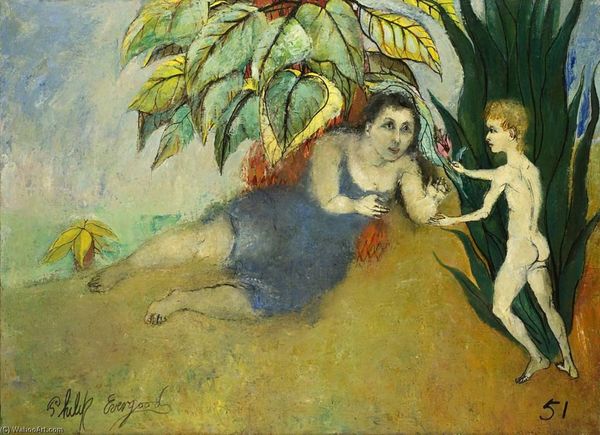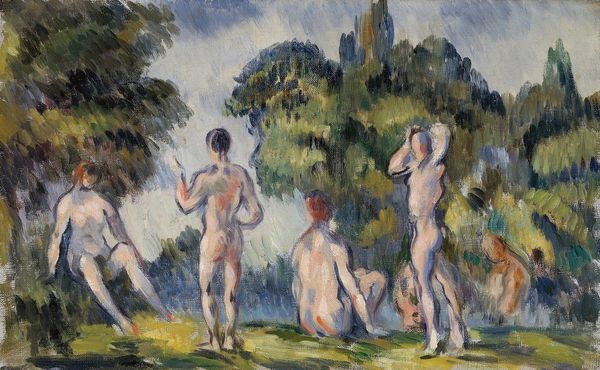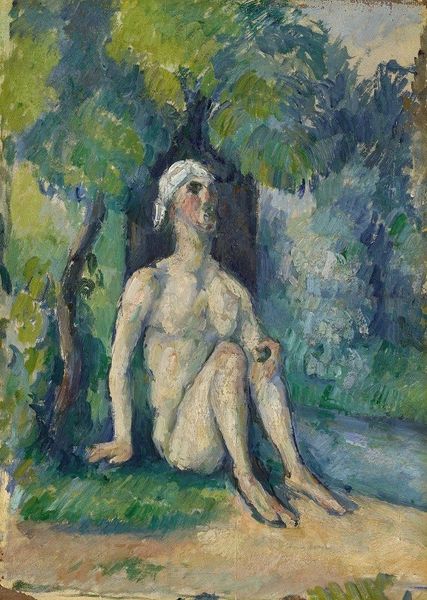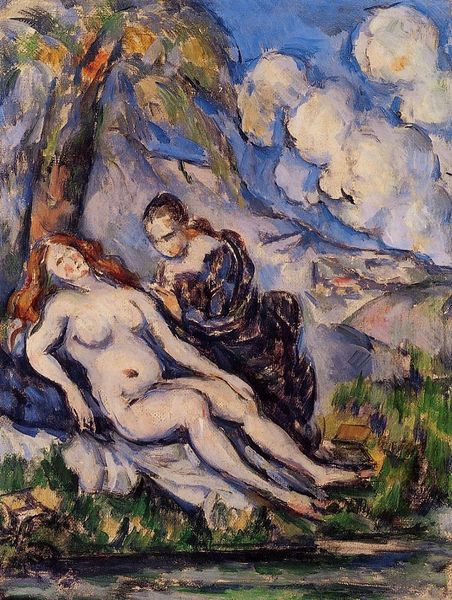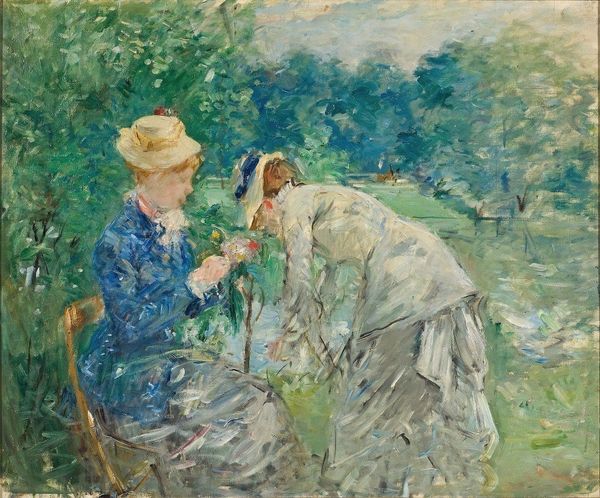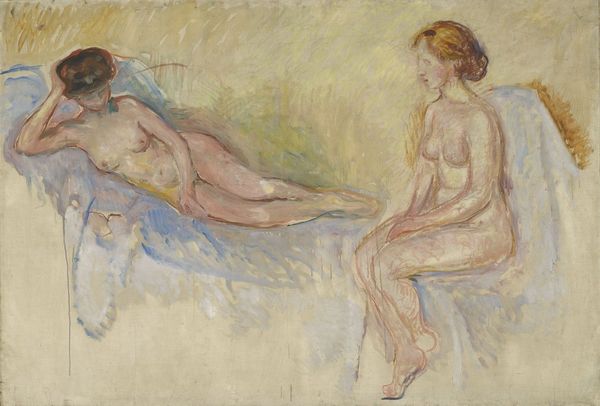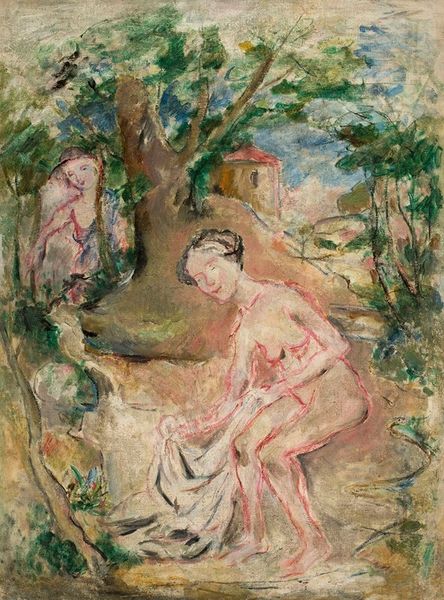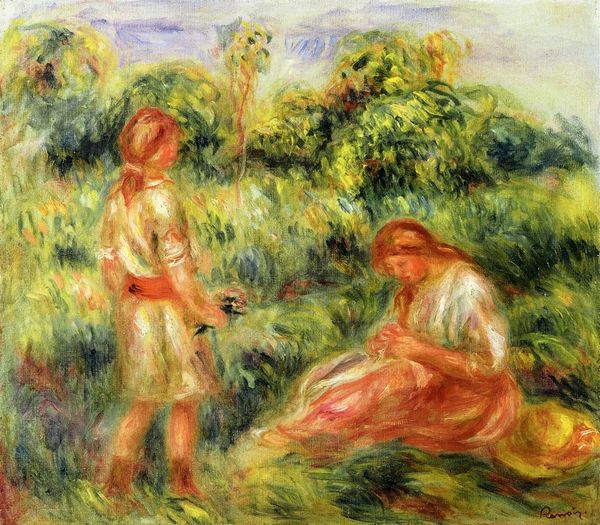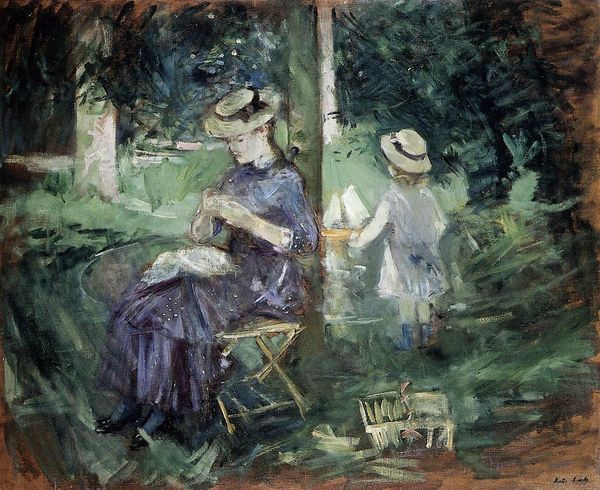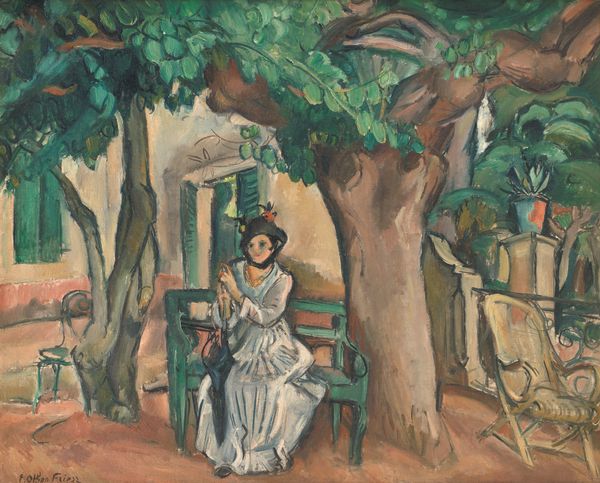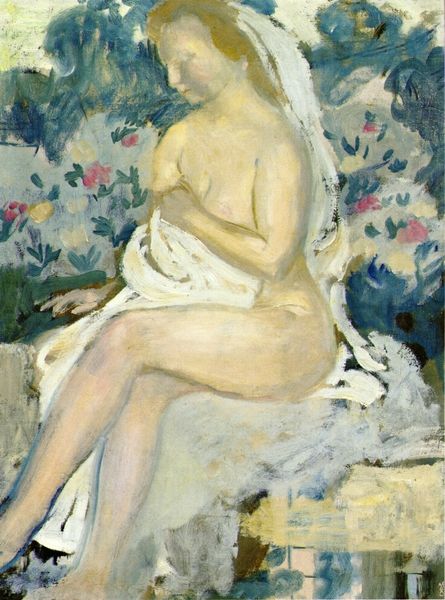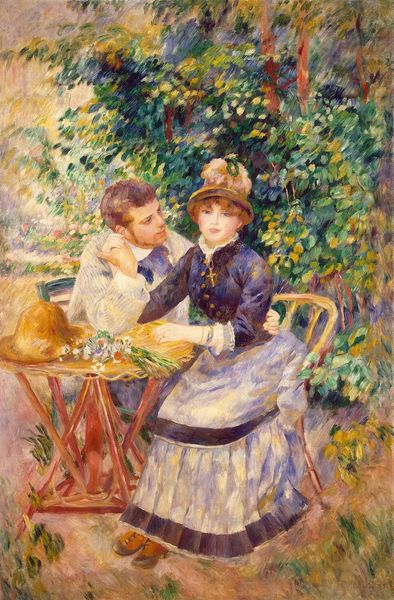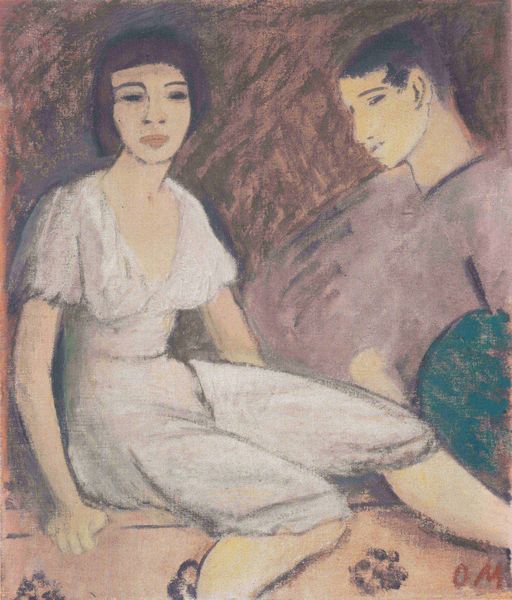
painting, oil-paint
#
portrait
#
painting
#
impressionism
#
oil-paint
#
landscape
#
figuration
#
oil painting
#
intimism
#
post-impressionism
Copyright: Public Domain: Artvee
Editor: We’re looking at Paul Cézanne’s "Bethsabée," painted between 1885 and 1890. It’s an oil painting with two figures in a landscape setting. What immediately strikes me is the contrast between the figures' treatment; the nude Bathsheba feels so raw and immediate compared to the clothed figure beside her. How do you interpret this work from a formal perspective? Curator: Indeed. Notice how Cézanne employs color and form to create distinct zones. The chromatic intensity of the verdant foliage and the figures are set against the planar facade of the architecture on the right, producing a spatial ambiguity, doesn't it? Consider the formal relationships here – how do the blocks of color interact? Editor: I see what you mean. The painting feels very flattened, almost like a collage of color patches, which contrasts with the three-dimensionality typically pursued by impressionists. Is he trying to break down form, reducing figures to geometric shapes? Curator: Precisely. Observe Cézanne's use of short, parallel brushstrokes. This deliberate application breaks down the surface, emphasizing the two-dimensional quality of the canvas. The interplay between warm and cool tones helps establish a structural framework. The painting thus becomes an object, less about representing reality, more about its own materiality. Do you perceive a spatial disjunction? Editor: Absolutely. The background seems to tilt forward, flattening the space. The forms feel simultaneously present and fragmented. Curator: That fragmentation, and the emphasis on pure form and color, pave the way for later abstract explorations. Editor: This focus on the elements of the work, makes me appreciate Cézanne's departure from traditional perspective and pictorial space and value his move towards abstraction. Curator: This deepens our understanding of the inherent tensions within the painting's structure, an essential Post-Impressionist feature.
Comments
No comments
Be the first to comment and join the conversation on the ultimate creative platform.
